Key takeaways
- Grassroots fundraising relies on the personal connections and stories that resonate with supporters, fostering deeper engagement than traditional big-donor methods.
- Effective grassroots strategies include hosting small gatherings, utilizing personal narratives for fundraising asks, and maintaining personalized communication with donors.
- Building lasting relationships and addressing skepticism is crucial for successful grassroots initiatives, as every contribution, no matter how small, is valuable.
- Measuring success involves not just financial goals but also the growth of community ties and donor retention, emphasizing ongoing engagement and support.
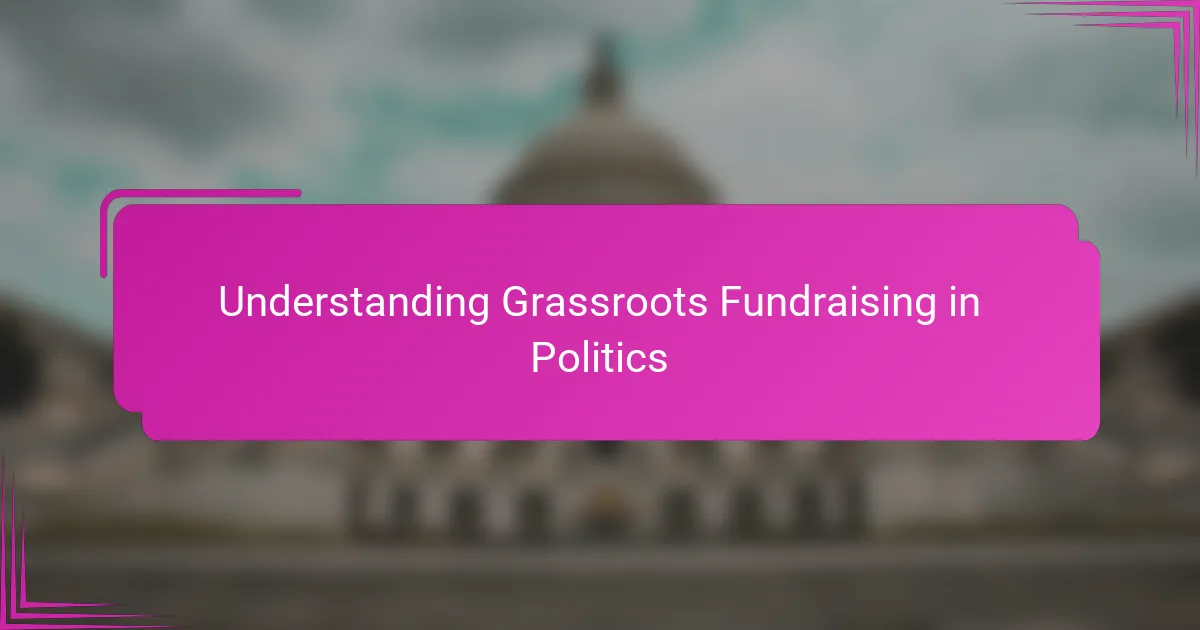
Understanding Grassroots Fundraising in Politics
Grassroots fundraising in politics feels like tapping into the real heartbeat of a community. When I first got involved, I was surprised by how small donations from ordinary people could create a powerful momentum, far beyond what big donors alone could achieve. Have you ever wondered why a single dollar from a committed supporter can sometimes mean more than thousands from a distant backer?
From my experience, grassroots efforts are deeply personal. It’s not just about the money; it’s about building relationships and trust with voters who feel genuinely connected to the cause. I’ve seen firsthand how sharing stories and listening to concerns at neighborhood events translates into those crucial contributions that fuel campaigns.
What I find most compelling is the sense of empowerment these initiatives bring to everyday citizens. When people realize their voice really matters, their support grows beyond writing checks—it becomes active participation. That firsthand involvement has a special energy that large-scale fundraising just can’t replicate in my opinion.
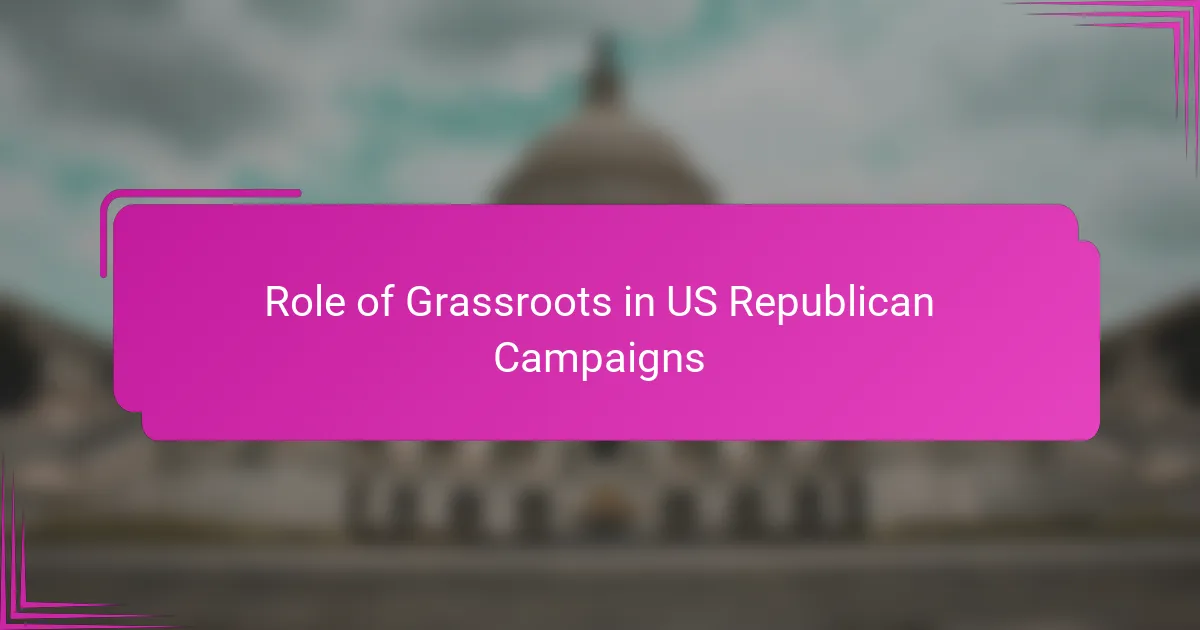
Role of Grassroots in US Republican Campaigns
Grassroots efforts in US Republican campaigns often serve as the foundational engine driving both momentum and voter engagement. From my experience, these campaigns rely heavily on volunteers knocking on doors and making phone calls, which creates a sense of shared purpose that no big-budget TV ad can match. Have you noticed how a neighbor’s sincere conversation can shift opinions more effectively than a polished campaign commercial?
In my time supporting Republican candidates, I’ve seen grassroots activism transform quiet communities into vibrant hubs of political energy. It’s in those small gatherings, like local meetups or [censured] events, where supporters exchange ideas and build a collective identity rooted in shared values. This organic connection strengthens the campaign well beyond financial donations—it forges loyalty.
What surprises many is how grassroots fundraising doesn’t just fill campaign coffers but also cultivates lasting relationships between candidates and constituents. I remember working alongside a group of volunteers whose passion wasn’t driven by money but by a genuine belief in the candidate’s message. That authentic enthusiasm often translates into sustained voter turnout and deeper community ties, which can be the difference between winning and losing on election day.
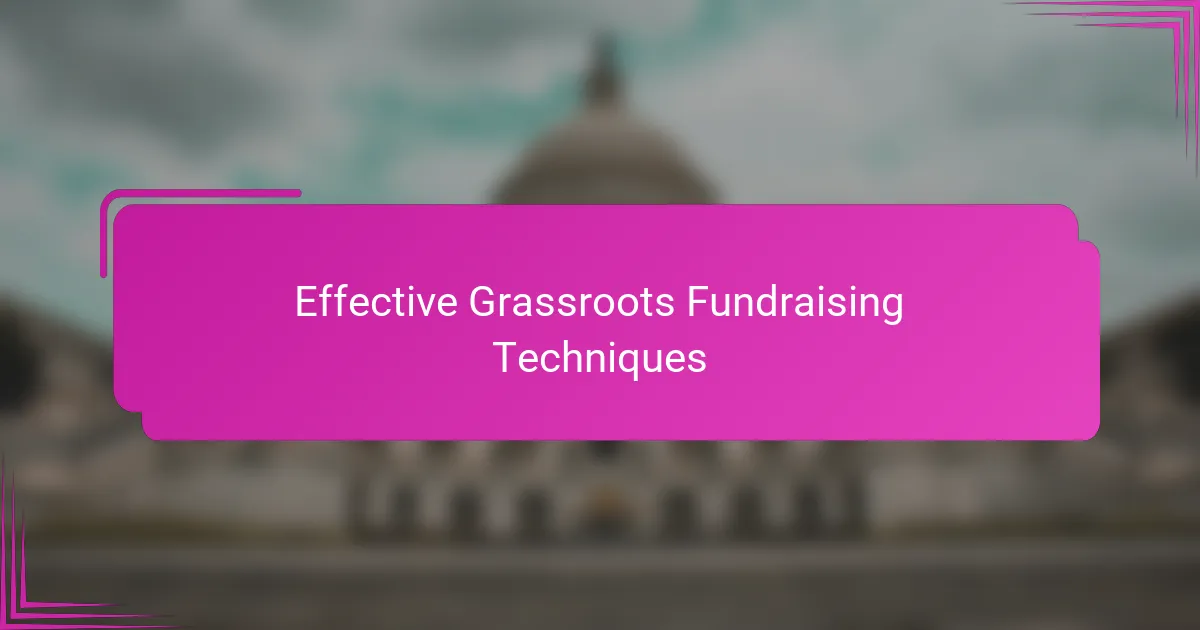
Effective Grassroots Fundraising Techniques
One technique I’ve found incredibly effective is tapping into personal stories during fundraising asks. When supporters hear why a candidate matters to someone like them, the connection becomes real, and they’re more willing to contribute—even if it’s just a small amount. Have you ever noticed how a heartfelt story sticks with you far longer than the usual campaign pitch?
Another approach that worked well for me was organizing small, informal gatherings—sometimes just a handful of neighbors in a living room. These intimate settings create a relaxed atmosphere where people feel heard and valued, which naturally encourages generosity. It’s surprising how much trust builds when you move beyond emails and ads to genuine face-to-face conversations.
Finally, I can’t overstate the power of timely, personalized follow-ups after someone donates. Sending a simple thank-you note or updating donors on the campaign’s progress shows appreciation and keeps them engaged. From my experience, people want to feel like they’re part of something bigger, not just a funding source. Have you tried reaching out personally after a donation? It often makes all the difference.
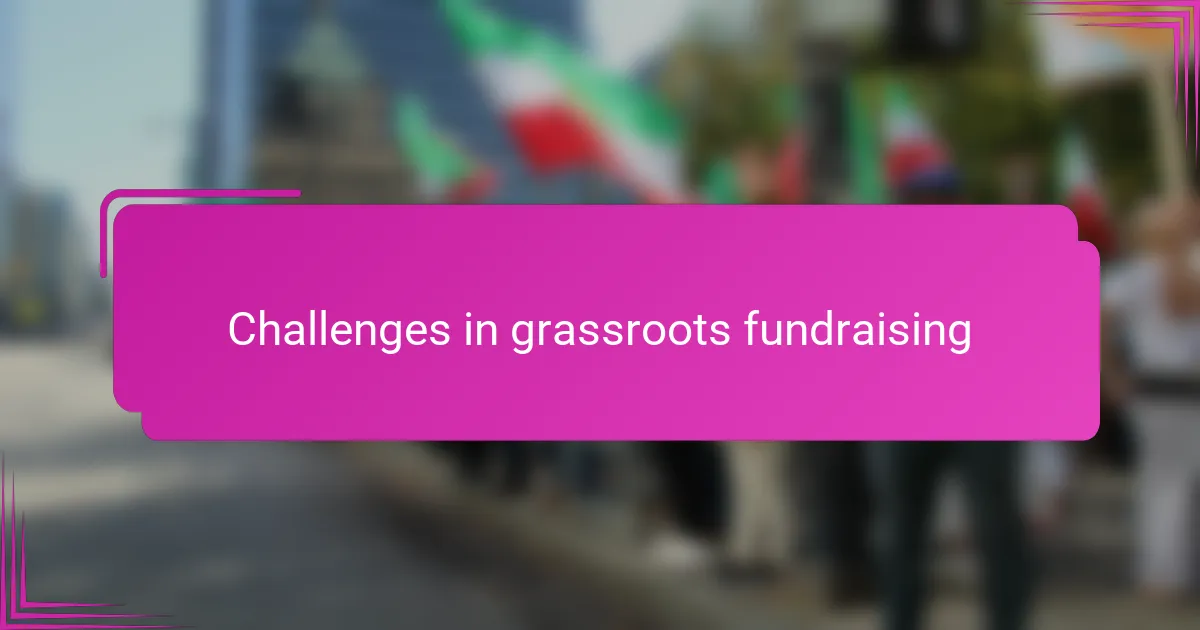
Challenges in Grassroots Fundraising
Sometimes, the hardest part of grassroots fundraising is overcoming skepticism. I’ve encountered supporters who hesitate to chip in, worried their small donation won’t make a difference. But I’ve learned that patiently explaining how every dollar adds up often turns doubt into enthusiasm. Have you ever felt unsure whether your contribution matters? In grassroots campaigns, it absolutely does.
Another challenge is the sheer time and energy required to maintain constant engagement. From experience, keeping volunteers motivated while juggling event planning and follow-ups can be exhausting. I recall one campaign season when we were stretched thin, yet the team’s dedication kept us pushing forward, even when burnout loomed.
Lastly, competing for attention in an age saturated with political messages makes reaching potential donors tricky. I’ve found that cutting through the noise requires creative approaches and genuine conversations, not just mass emails. When was the last time a personalized ask felt truly meaningful to you? That’s what grassroots fundraising strives to recreate every day.

Personal Experience with Grassroots Initiatives
What struck me most during my early days volunteering was the power of one-on-one interactions. I remember standing at a local fair, sharing why I supported a candidate, and seeing a passerby pull out their wallet—not because of the message itself, but because they felt part of a community. Have you ever experienced that moment when a simple conversation turns into meaningful support?
There were times when fatigue set in, especially during long canvassing days. Yet, witnessing a neighbor’s genuine enthusiasm reignite my own commitment reminded me why grassroots work matters. It’s those small victories—like a heartfelt “thank you” from a supporter—that fueled my persistence more than any big donation ever could.
I also noticed how personal stories could break down barriers. During one fundraiser, a volunteer shared how the candidate’s policies would impact their family. That vulnerability moved others to contribute, proving that authenticity is a powerful fundraising tool. Doesn’t hearing a real-life example often resonate more than polished speeches? For me, it made all the difference.
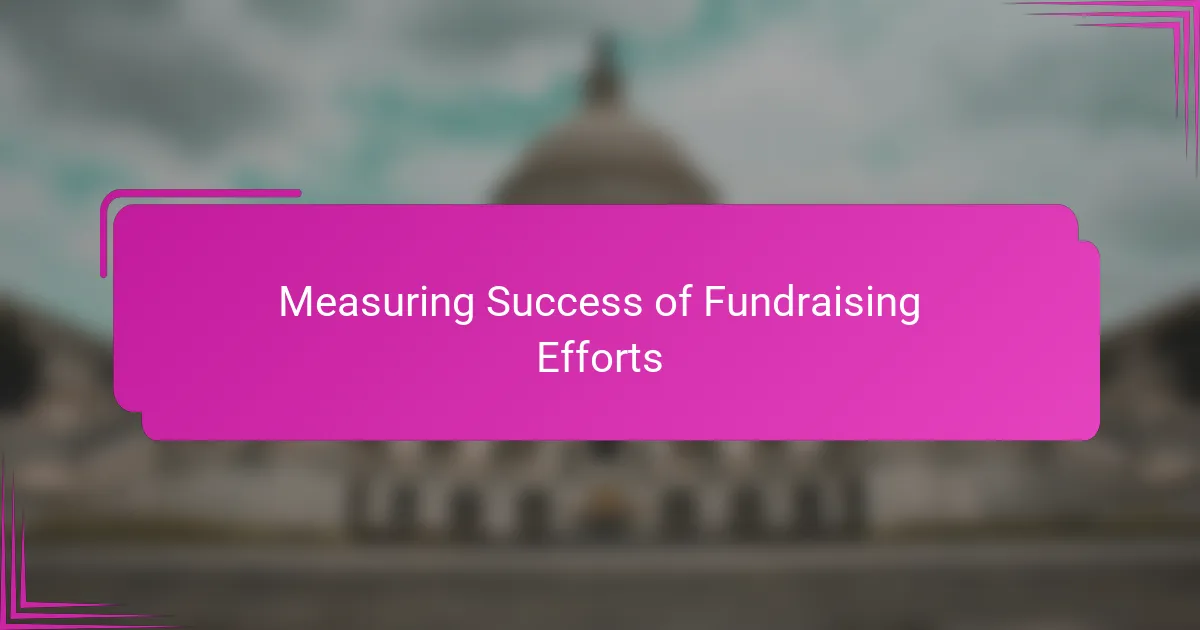
Measuring Success of Fundraising Efforts
Measuring the success of grassroots fundraising efforts goes beyond just tallying up dollars raised. In my experience, it’s about tracking how many new relationships were built and how deeply supporters feel connected to the campaign’s mission. Have you noticed how a small contribution often signals a bigger commitment to volunteer or spread the word? That’s a key indicator of success I’ve come to appreciate.
I’ve also found it helpful to set clear, achievable milestones and then celebrate those wins with the team. For example, hitting a target number of donors or increasing the average donation size shows momentum—and it fuels enthusiasm for the next push. From what I’ve seen, when supporters feel their efforts are making an impact, they keep coming back, sometimes even increasing their support over time.
Another angle I pay attention to is donor retention. It’s not just about getting money once but about cultivating ongoing engagement. I remember a campaign where personalized thank-you messages and updates on how funds were used led to repeat donations from the same individuals. Tracking these patterns helped us understand that success means building a sustainable community, not just meeting short-term financial goals. Wouldn’t you agree that a loyal supporter base ultimately strengthens any campaign?